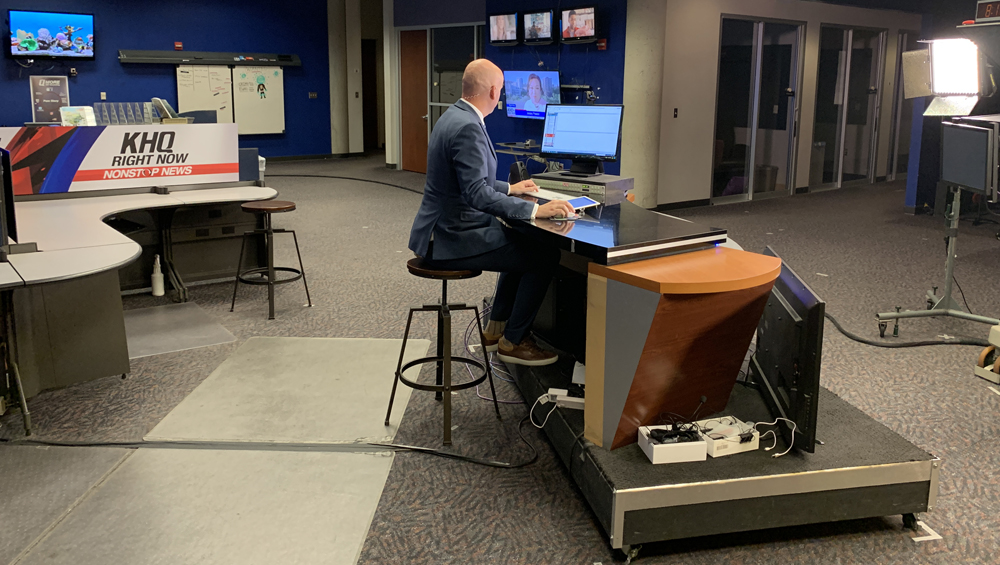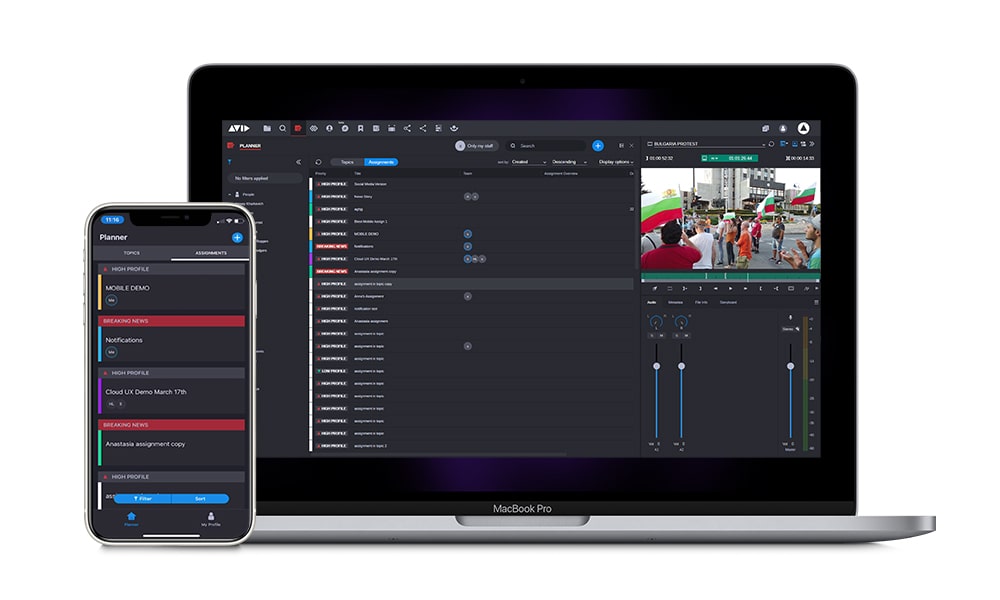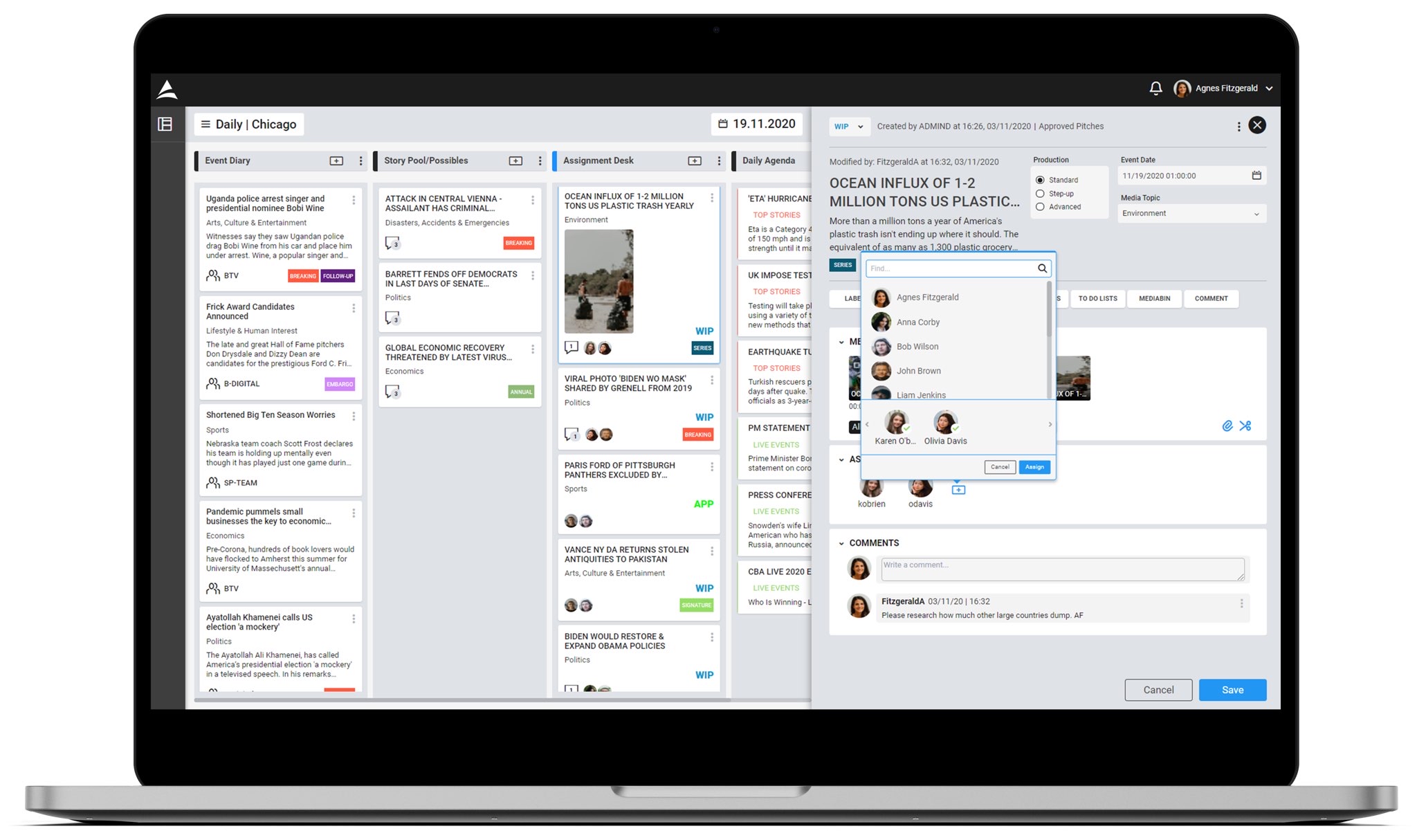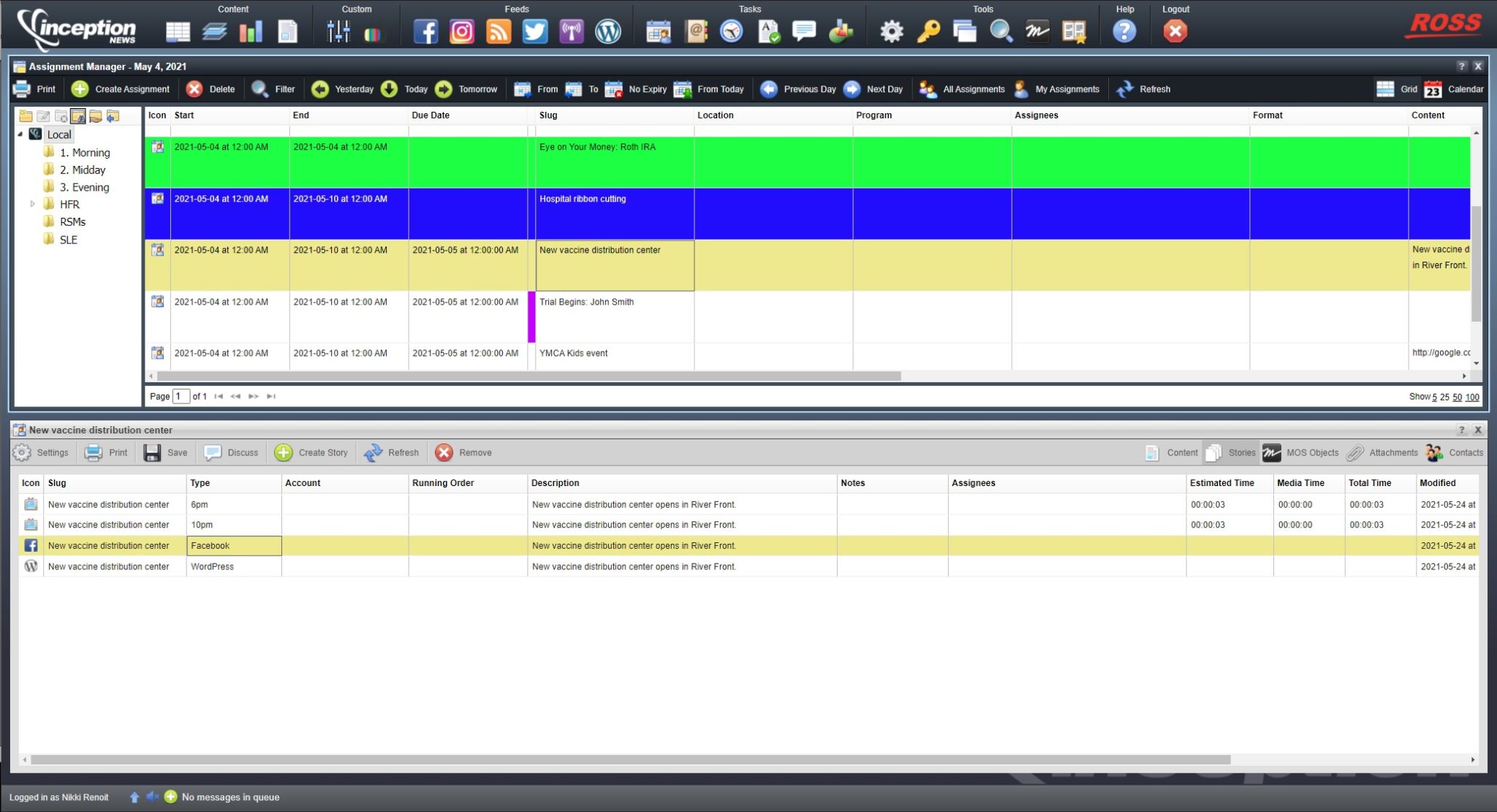
TVN Tech | Vendors: Storycentric Workflow Shift Long Overdue

With a shift in thinking and the strategic use of technology, broadcasters can reshape their newscast-centric workflows around the stories themselves to increase audience engagement.
For decades, the broadcast newsroom’s focus has been on the evening newscast as the endgame, but the proliferation of platforms creates the need to push multiple versions of a story out in the different formats suitable for website, mobile, social, streaming and linear. So far, adoption of this type of workflow has been slow, partly due to a lingering focus on the evening newscast as the end goal, the difficulty of changing newsroom systems and the rate at which technology is becoming available to support story-centric workflows.
Embracing a storycentric workflow can reduce duplication of effort and increase the overall number of stories a station can share. At the heart of storycentric workflows are planning, collaboration and story creation, and vendors offer a host of tools to help on those fronts, including automation technologies that ensure each story is packaged appropriately for distribution to the different platforms.
“We need to catch up to the consumer and how they consume things,” says Neal Boling, station manager of KHQ-TV Spokane, Wash. “The struggle we’ve had as an industry is we’re still married too much to the broadcast platform.”
Historically, he says, traditional broadcast-specific rundowns “dictates our workflow throughout the day.” And with that being the case, they always have “just enough news for the 5 o’clock, no more, and just in time, and no sooner than when they need it,” he says.

MediaCentral Collaborate supports teamwork from anywhere with a collaborative story-centric workflow that connects teams in the studio, in the field and at home together using any device.
In his former position as a news director, he would hire college graduates who would walk in the door and “instantly forget how they consume information on a daily basis” and instead focus on 5 o’clock deadline pressure.
“We had dickens of a time getting young staff to produce content the way that they consume themselves,” Boling says.
Culture Shift
Upending the culture devoted to serving up the nightly newscast has required getting staff to be more cognizant of the visibility of different platforms, he says.
For example, the station’s digital stream is available on a linear digital subchannel, 6.3, and stream plays on TVs in the KHQ-TV newsroom, he says. The stream is a combination of live newscasts, newscast replays, live events and video clips.
“Putting our stream on over-the-air reinforces the culture shift to an instant video story triage instead of waiting for that traditional newscast,” he says. “They look at themselves on television, and they can’t ignore it, so now they’re more aggressive about pursuing” those stories.
Raul Alba, director of product marketing, media and cloud at Avid, notes that while some have embraced the concept of storycentric workflows, until the last year not a lot of tools have been available to help make that a reality.
“Nothing goes quickly in the newsroom,” he says.
Carol Bettencourt, Chyron’s vice president of marketing, says the company is working to bring more storytelling tools to the market as broadcasters think about shifting to a storycentric workflow. “Some will migrate faster than others,” she says. “Some will change, some will change to a degree.”
New Tools Needed
In order to shift from one workflow to another may require more than just a new way of thinking — it often requires new tools.
One new storycentric tool on the horizon is Dalet Pyramid, introducing Storytelling 360.
Raoul Cospen, Dalet’s director of product strategy-news, says legacy news room computer systems are simply not geared for digital workflows. The promise of Storytelling 360, which will be included in Dalet Pyramid later this year, is that it keeps track of a story’s different angles for different platforms, manages the collection of the story’s media assets, provides direct access to all the production tools, and provides assignments and tracking organization for stories.
In short, he says, Storytelling 360 reduces the number of systems needed for producing a story.
It also allows journalists to move faster, partly by making it easier to publish content digitally first.
“That is something Storytelling 360 allows you to do. You can start by giving a story a digital spin rather than a TV or radio spin,” Cospen says.

Dalet Pyramid’s Storytelling 360 approach delivers story-centric workflows with digital-first and enhanced collaboration capabilities.
And in a world where more and more broadcast teams are working on stories for many different locations, Storytelling 360 serves as something of a virtual newsroom dedicated to individual stories, he says.
“This is how we see the future for storytelling for news and sports,” Cospen says.
Fred Fourcher, Bitcentral founder and president, says the current process of producing content for a specific show and then cutting up a show for the web is very inefficient. And having multiple people involved in cutting a package down for different platforms doesn’t necessarily make sense, either, he says.
“Why touch the content so many times with different people? Sure, everybody’s got their job,” Fourcher says. “But I’m the one producing the story and I know best how to cut it versus the 11 p.m. producer cutting that to what they want.”
Instead of duplicating efforts, certain tasks can be automated, he says, which can free up “human energy to create more content.”
“There are so many places to publish to,” Fourcher says. “If you focus only on the rundown, there’s 100 other places your content could go. That’s not very efficient or enlightened.
“If you’re story-centric, your story flows effortlessly to all those places with the right technology.”
Bitcentral’s Oasis and FUEL combine to help broadcasters send the right content to the appropriate platform without spending a lot of resources, he says. It also makes it possible for stations in a group to make stories available to sister stations, which expands the overall number of stories broadcasters can share with their audiences.
Uptick In Audience Engagement
Stories shared via the right platforms can drive up audience engagement, notes Mike Kelley, Grabyo president, Americas.
“Multiplatform distribution makes it super quick and easy to get the content to those places so consumers can view it on any location, any device they want,” he says.
A broadcaster in Malaysia using Grabyo’s platform to send content to social has seen consumer engagement increase by 1,800%, Kelley says.
Over the years, broadcasters have been evolving to storycentric workflows, says Nikki Renoit, acting product manager for editorial workflow at Ross Video.

The assignment manager in Ross Video’s Inception helps broadcasters plan and track stories.“Broadcasters have been doing storycentric workflows for a while and not realizing it,” she says. Over the past decade, she adds, broadcasters have been trying to “figure out how to deal with social media and website content and make it a rich experience. Before, when we sent it to the web, it was pretty much same experience as if they’d caught the newscast.”
But just repurposing the content for a different platform is not enough, she says. Different guidelines, styles and rules prevail on different platforms.
“Today broadcasters are focused on telling the story as richly as it can be told on the platform it’s being published to,” Renoit says. “And journalists are being asked to do more and more in short time.”
Some are using tools like Ross Video’s Inception to help them with the process of story creation through tailoring it for different platforms, she says.
Start With Planning
As Gene Sudduth, national sales director, North America, for Octopus Newsroom Americas, puts it, “storycentric workflows start with planning.”
The Octopus newsroom collaboration system offers a storycentric workflow, and Kor, a standalone product in late beta testing, focuses on cloud-based planning, collaborating and publishing, he says.
According to Sudduth, most of the call letter TV stations Octopus is working with are using a storycentric workflow to develop content but are still heavily reliant on the rundown.
For the last couple of years, some groups have used the Associated Press’s Playbook planning tool, which helps multiple teams track a story from planning angles and coverage to publication and can help reduce duplication of effort, says Brian Doyle, director of product management.
Earlier this year, the organization commercially released AP Cast, which is meant to help organize publication to third party output channels.

AP Cast helps organize publication of content to third-party destinations.
“It takes all the stories you’re creating in Playbook, transitions them to AP Cast in a seamless user interface and publishes them via our API to third party systems,” Doyle says. The Daily Mail is using a combination of Playbook and AP Cast to plan and publish their stories, he adds.
Another planning tool that broadcasters can use in a storycentric workflow is MediaCentral Collaborate, Alba says. Tools like calendars and Google Documents have limits, he says.
“You need something to fill the gap,” Alba says. “MediaCentral Collaborate is a tool to track tasks, calendars, messaging, and keep together everything for the story including the media,” making it possible to “do more” with stories beyond the broadcast.
Access From Anywhere
Because there is so much collaboration from team members working in different locations, they need quick and easy access to content from anywhere, says Blackbird CEO Ian McDonough. Blackbird’s codec is efficient and light enough to make it possible to store and instantly access content without the need to download or render content, he says.
A+E Networks uses Blackbird’s codec to keep more than 10,000 hours of content available for use by any department from the office or home, he adds.
Paul Shen, TVU Networks CEO, says the ability to efficiently find raw material is one of the important steps in a storycentric workflow and that tools like TVU MediaMind and TVU Search support that task.
“If the content cannot be discovered effectively, a storycentric workflow will not work,” Shen says. “It will take too much time and effort to find the content relevant to the story and produce it effectively.”
And efficiency can help make the difference in whether a broadcaster is first to report a story.
Boling urges broadcasters to rally around the idea that the story itself is important, rather than the platforms.
“Our industry is obsessed with the platforms,” Boling says. “But take care of the story, and the platforms will take care of themselves.”
Editor’s note: This story has been revised to reflect input from Raoul Cospen on Dalet’s new Pyramid product.
































Comments (0)